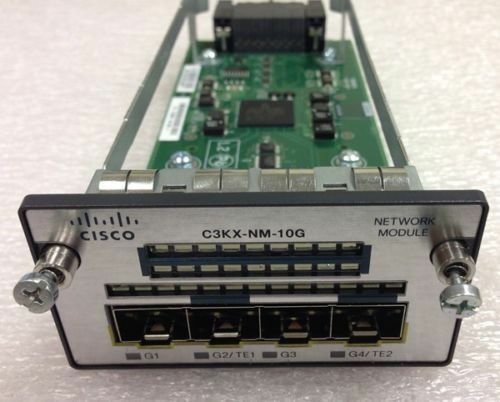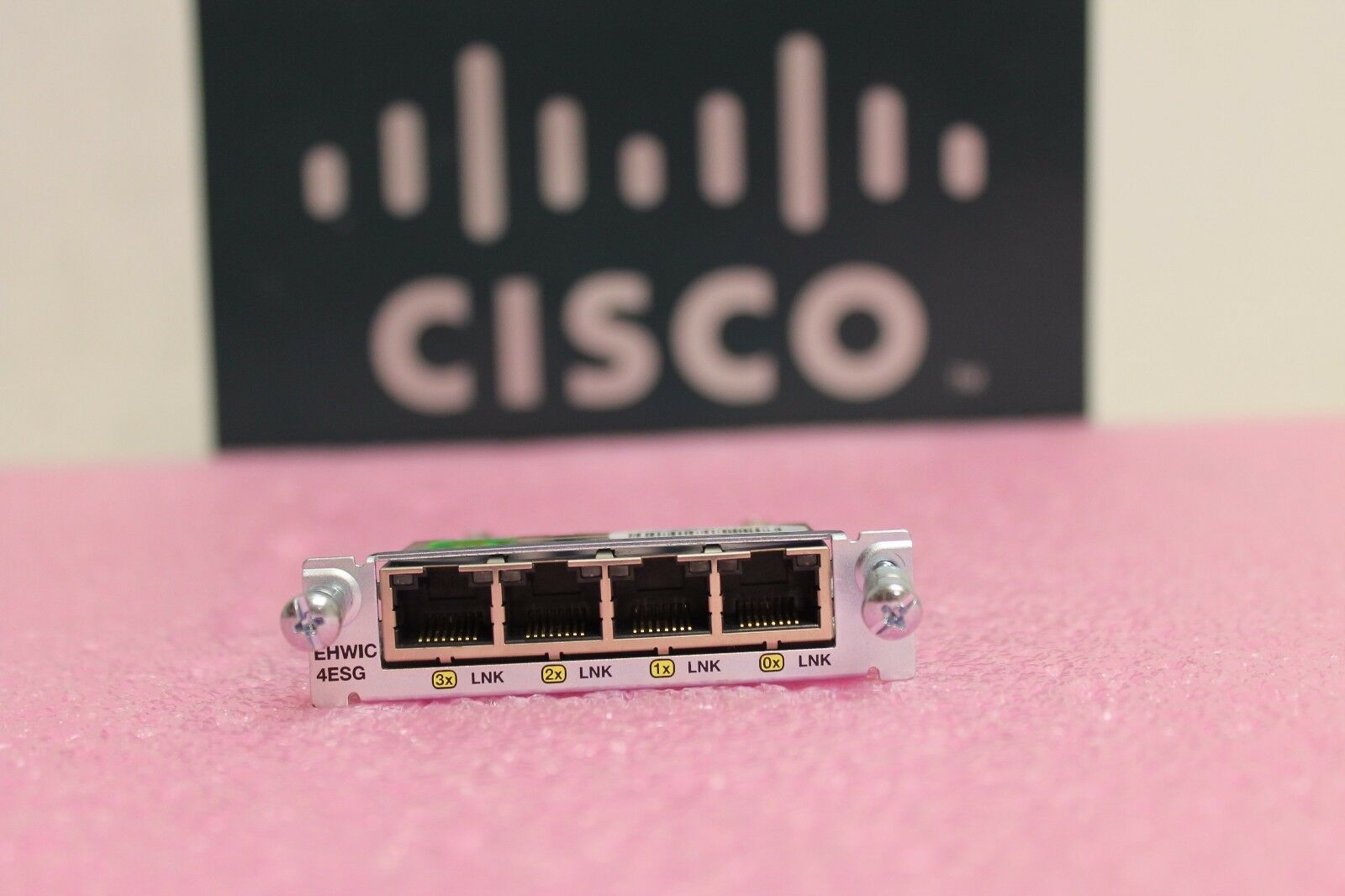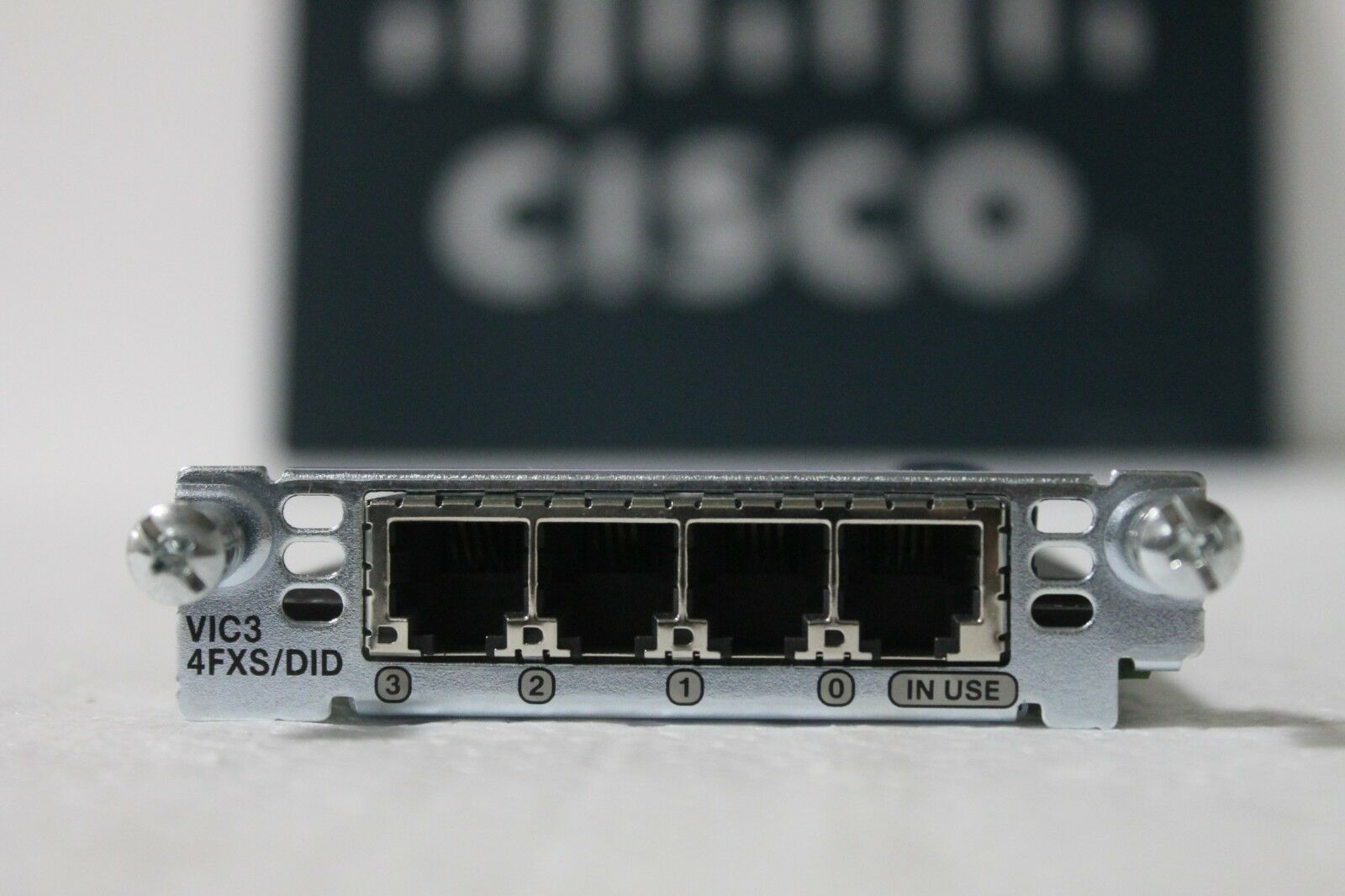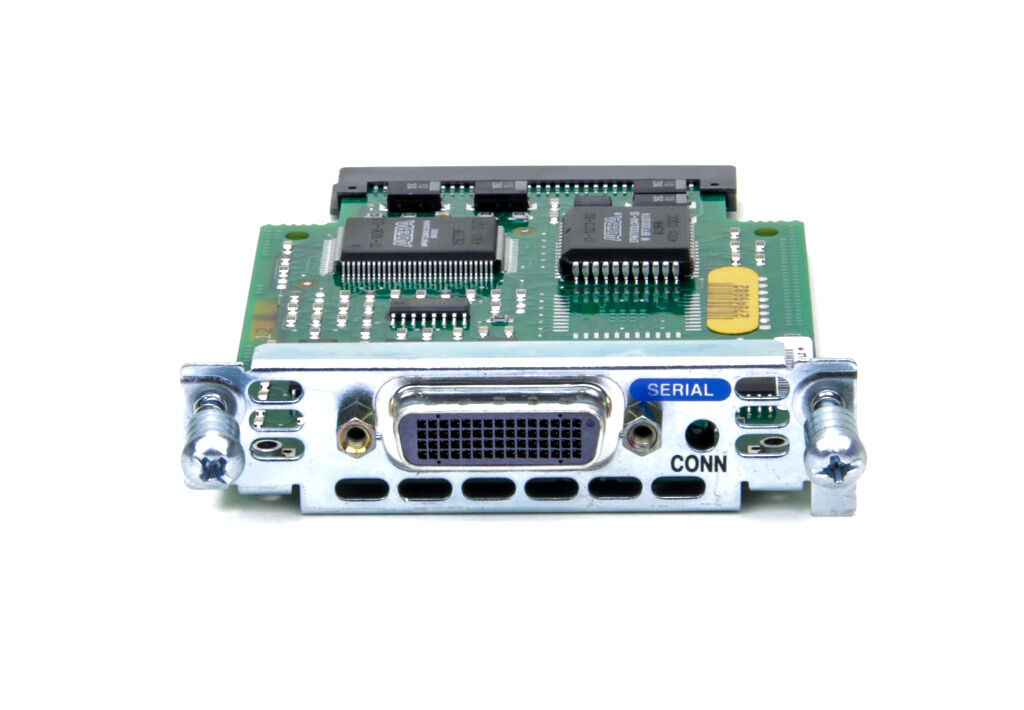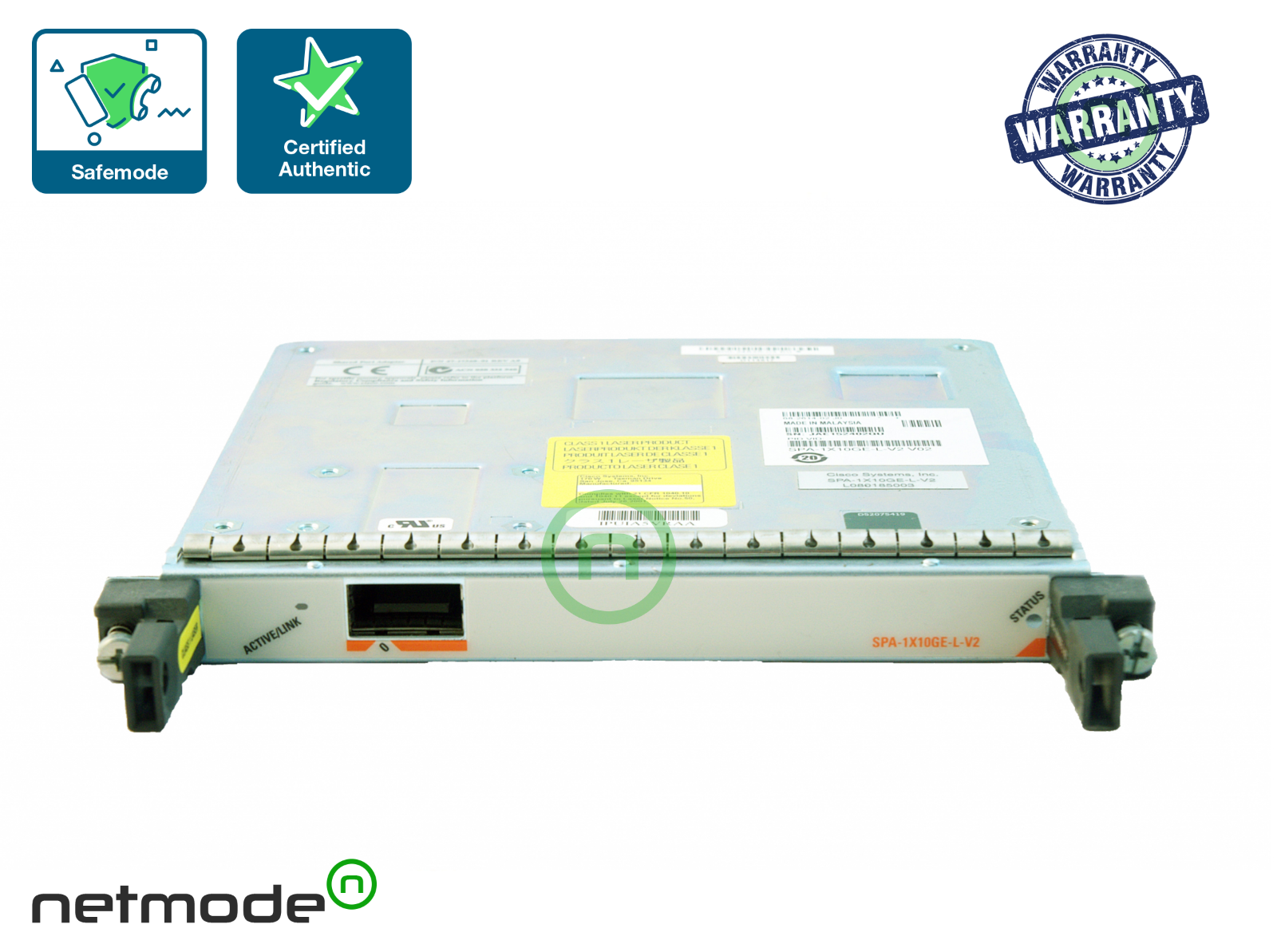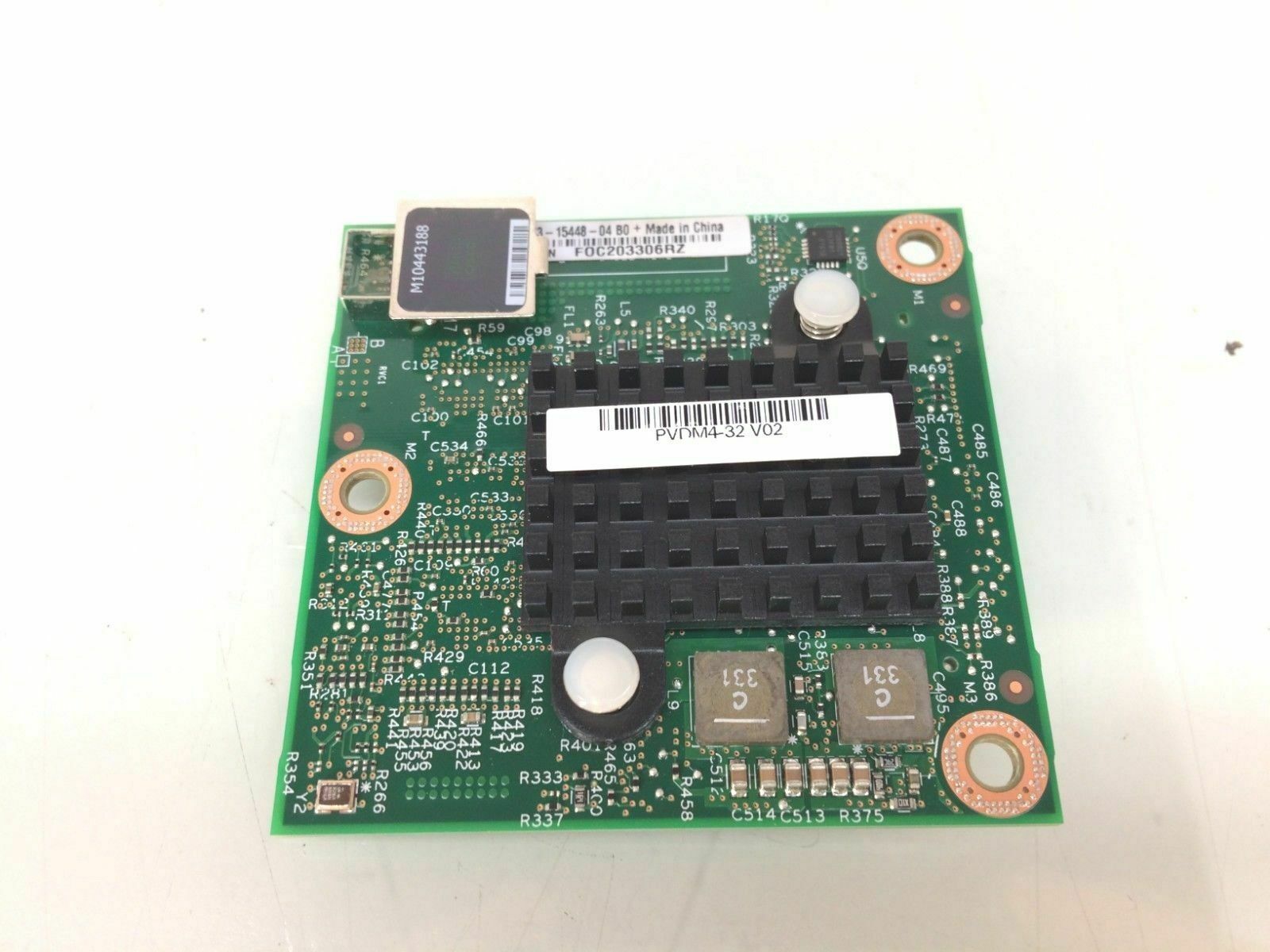-40%
Cisco SM-X-1T3/E3 One-Port Clear-Channel T3/E3 Service Module 1 Port Channel
$ 44.66
- Description
- Size Guide
Description
Tested working and good condition..."Q.
What does the new Cisco
®
Packet-over-T3/E3 Service Module for Cisco 2900 and 3900 Series and Cisco 4451-X Integrated Services Routers (SM-X-1T3/E3) provide?
A.
This new module is a single-wide, single-port universal T3/E3 service module with integrated channel service unit/data service unit (CSU/DSU) and provides clear-channel and subrate T3/E3 connectivity. It can be configured for either T3 or E3 mode.
The Cisco T3/E3 Service Module provides a cost-effective solution for deployment in the Cisco 2911, 2921, 2951 Series, and 4451-X Integrated Services Routers (ISRs) as service provider-managed customer premises equipment (CPE) or by enterprise customers for clear-channel T3/E3 connectivity to medium or large branch and smaller regional office locations for multiservice data, voice, and video services over a single link.
Q.
Which platforms support the module (Figure 1)?
A.
It is supported on Cisco 2911, 2921, 2951, 3925, 3945, 3925E, 3945E, and 4451-X ISRs.
Figure 1.
T3/E3 Service Module
Q.
Does the module support channelized mode?
A.
No.
Q.
What is the minimum Cisco IOS
®
Software release required to support the new module for the Cisco Integrated Services Routers Generation 2 (ISR G2) routers?
A.
Cisco IOS Software 15.2(4)M4, 15.3(1)T2, or 15.3(2)T1 is required on the ISR G2s.
Q.
What is the minimum Cisco IOS XE Software release required to support the new module for the Cisco 4451‑X?
A.
Cisco IOS XE Software Release XE3.9 is the minimum Cisco IOS XE Software release required.
Q.
What Cisco IOS Software feature sets are the module supported on?
A.
The module is included in the following Cisco IOS Software technology packages:
●
IP Base
●
Data/AppX
●
Sec
●
UC
Q.
Does the new module have any additional flash and DRAM memory requirements?
A.
No. The minimum memory requirements specified in the supported Cisco IOS Software releases are sufficient. A minimum of 11 MB of flash memory space is required for storing the module firmware image.
Q.
How is the new module positioned and deployed (Figure 2)?
A.
Cisco 2911, 2921, 2951, 3925, 3925E, 3945, and 3945E ISRs support full wire-rate performance with the single service module. The Cisco 3945 and 3945E support up to two T3/E3 modules.
Figure 2.
Cisco T3/E3 Service Module Deployment
Q.
How do I interpret the various LEDs available on the new T3/E3 module?
A.
Table 1 explains the LEDs on the Cisco T3/E3 Service Module.
Table 1.
LEDs on T3/E3 Module
LED
Meaning
EN (Enable LED)
Green indicates that the service module has passed self-test and is available to the router.
AL (Alarm)
Yellow indicates loss of frame.
CD (Carrier Detect)
Green indicates signal is present on the port.
LP (Loopback Mode)
Yellow indicates a loopback condition present on the port.
AIS (Alarm Indication Signal)
Yellow indicates an alarm on the DS-3 transmission.
FERF (Far End Remote Failure)
Yellow indicates a remote failure at the far end of the connection.
Q.
What cables should I use for this module?
A.
The T3/E3 module supports standard 75-ohm coaxial cable (RG-59 or equivalent) using a BNC connector type.
Q.
Is this cable orderable with the T3/E3 module?
A.
Yes; the part number is CAB-ATM-DS3/E3=.
Q.
What encoding and decoding does the T3/E3 module support?
A.
It supports binary three-zero substitution (B3ZS) encoding and decoding and high-density bipolar with three zeros (HDB3) encoding and decoding for E3. This module does not support alternate mark inversion (AM)I encoding and decoding.
Q.
Does the module support online insertion and removal (OIR)?
A.
Yes, the module supports OIR on the Cisco 4451-X, 3925, 3945, 3925E, and 3945E ISRs. Please follow the instructions in the
3900 Hardware Installation Guide
and follow the steps in the “Online Insertion Removal” section for the exact steps. OIR is not supported on the Cisco 2951.
Q.
What is the maximum number of these modules supported on each chassis?
A.
Table 2 lists the number of T3/E3 modules supported on each chassis.
Table 2.
Number of T3/E3 Modules Supported on Each Chassis
Router Model
Number of Modules Supported
Cisco 2911
1
Cisco 2921
1
Cisco 2951
1
Cisco 3925
2
Cisco 3945
2
Cisco 3925E
2
Cisco 3945E
2
Cisco 4451-X
2
Q.
What is the interface name when the ISR G2 router boots up with the T3/E3 module in the running configuration?
A.
The module is listed as interface sm slot/(subslot+1). For example, if the T3/E3 module is present in slot 1,
interface sm 2/1
is the configuration.
This connection is used to perform debugging and to set up a console connection to the module. It is not used for data traffic. This port is assigned an IP address from the Virtual Route Forwarding (VRF) Dynamic Host Configuration Protocol (DHCP) pool.
Q.
Is a similar interface created on the Cisco 4451-X?
A.
No additional interface is created on the Cisco 4451-X. Console connection can be initiated to the module with the command
hw-module session
for debugging purposes.
Q.
What is the basic configuration for the Cisco T3/E3 Service Module on the ISR G2?
A.
This basic configuration starts with configuring the
card type t/e3
. This configuration automatically creates the controller T3 or E3 configuration and the serial interface configurations. For example:
controller T3 4/0
clock source line
!
interface Serial4/0
ip address 1.1.1.1 255.255.255.0
no keepalive
dsu bandwidth 44210
Q.
What are the differences between the ISR G2 and the Cisco 4451-X in terms of configuration?
A.
There is no controller T3 or E3 configuration on the Cisco 4451-X. On the Cisco 4451-X the card type T3 or E3 configuration, which internally configures the controller and serial interface configurations, is required.
Q.
Why do I not see the serial interface configuration in the running configuration?
A.
On first boot the configuration does not show the interface or controller. The command
card type t3/e3
oir stop
command is issued and while the module is booting up after OIR start or hard insertion) no serial interface exists.
Q.
Will the T3/E3 module work for both T3 and E3 channel modes simultaneously?
A.
No, you can use the T3/E3 module in either the T3 or E3 channel mode, but not in both simultaneously.
Q.
Can I change the card type between T3 and E3?
A.
To change the card type between T3 and E3, first unconfigure the current card type, save the configuration, and reload the router. When the router boots up, configure the card type to the newer mode. No reload is required on the Cisco 4451-X to change the card type between T3 and E3, but the card automatically reloads without user intervention as soon as
no card type
is configured.
Q.
Is there a difference in how we configure the clock between the ISR G2 and the Cisco 4451-X?
A.
The
clock source
is configured under the controller configuration on the ISR G2. On the Cisco 4451-X the
clock source
is configured under the serial interface configuration. Functionwise there is no difference between these two platforms.
Q.
What subrate vendor types will interoperate with the T3/E3 module?
A.
The T3/E3 module supports the following vendor types:
●
For T3 mode: Digital Link, Kentrox, Larscom, Verilink, and Adtran
●
For E3 mode: Digital Link and Kentrox
Q.
What MIBs are supported for this module?
A.
The T3/E3 module supports the Network Module MIB (OLD-CISCO-CHASIS-MIB) and the T3/E3 RFC 1407 MIB.
Q.
What modules is the T3/E3 module interoperable with?
A.
It is compatible with the modules listed in Table 3 on the respective platforms.
Table 3.
Module Compatibility
Platform
Module Part Number
Cisco 7200
PA-T3, PA-E3, and PA-MC-2T3
Cisco ASR1000
SPA-2XT3/E3
Cisco ISR and ISR G2 routers
NM-1T3/E3
Q.
How is the T3/E3 module different from the 2 port multichannel T3 port adapter (PA-MC-2T3+) module?
A.
The 2 port multichannel T3 port adapter has 2 ports, whereas the new T3/E3 module has 1 port. The 2 port multichannel T3 port adapter supports clear, subrate, and channelized application, whereas the new T3/E3 module supports clear and subrate functions only."


